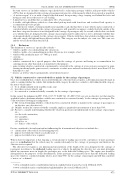Page 481 - Juta's Indirect Tax
P. 481
IN 82 VaLue-added tax act: InterPretatIOn nOtes IN 82
the term ‘motor car’ includes ordinary coupe (hatch-back), sedan type passenger vehicles and sport utility vehicles
(SUVs) that are designed for the carrying of passengers irrespective of the means by which it is powered or propelled.
• A station wagon* is a car with a longer body than usual, incorporating a large carrying area behind the seats and
having an extra door at the rear for easy loading.
• A mini-bus† is a small bus that accommodates 10 to 15 passengers.
• A double cab light delivery vehicle is a four wheel pick-up truck with four doors and a reduced load capacity to
accommodate up to ve people.
• Any other motor vehicle of a kind normally used on public roads, that has three or more wheels and is constructed or
converted wholly or mainly for the carriage of passengers, will generally encompass a vehicle that falls outside of the rst three categories because it is not designed for the carriage of passengers only. As a result, vehicles that cast doubt as to whether they are designed for the carriage of passengers must be subjected to a test to determine whether they are designed wholly or mainly for the carriage of passengers. Vehicles with these characteristics include panel vans, club cabs, single cab light and heavy delivery vehicles. This category was the subject of a court case. The court case and the test are discussed in detail in 3.2.
3.1.1 Exclusions
The de nition of ‘motor car’ speci cally excludes –
• vehicles capable of accommodating only one person;
• vehicles capable of accommodating more than 16 persons (for example, a bus);
• vehicles with an unladen mass of 3 500 kg or more;
• caravans;
• ambulances;
• vehicles constructed for a special purpose other than the carriage of persons and having no accommodation for
carrying persons other than such as is incidental to that purpose;
• game viewing vehicles (constructed or permanently converted for the carriage of seven or more passengers for game
viewing in national parks, game reserves, sanctuaries or safari areas and used exclusively, that is, more than 95% for
that purpose); and
• hearses (as well as vehicles permanently converted into hearses).
3.2 Vehicles constructed or converted wholly or mainly for the carriage of passengers
Once it is established that a vehicle does not fall within one of the rst four categories, a determination must be made in order to con rm whether the vehicle falls within the fth category. In order for a vehicle to fall within the fth category, the motor vehicle must –
(a) be of a kind normally used on public roads; and
(b) have three or more wheels; and
(c) be converted or constructed wholly or mainly for the carriage of passengers.
In this regard, the judgment in ITC 1596 (1995) 57 SATC 341 (T) (ITC 1596) sets out an objective test that must be applied in order to determine whether a vehicle was constructed or converted ‘mainly’ for the carriage of passengers. The court stated the following in its judgement:
(i) The test in determining whether a vehicle has been constructed wholly or mainly for the carriage of passengers is an objective one (objective test).
(ii) ‘Mainly’ used in the context of wholly or mainly, implies a quantitative measurement of more than 50%.
(iii) Factors to consider in determining whether the vehicle in question is intended mainly for the carriage of passengers
are –
(aa) the total construction; (bb) assembly;
(cc) appearance;
(dd) space; or
(ee) surface of the vehicle.
Factors considered to be irrelevant and not in uencing the aforementioned objective test include the – (a) classi cation of the vehicle for licensing purposes;
(b) purpose for which the vehicle is actually used; or
(c) purpose for which it was acquired.
What is however important, is that forgoing a certain amount of loading space for the convenience of more passenger space is an indication that the vehicle may be constructed mainly for the carriage of passengers and therefore the objective test is required.
The objective test requires a one dimensional measurement of the length of the area designed for the carriage of passengers in relation to the dedicated loading space in a vehicle. In applying the objective test, one must determine which area measures more in length; the passenger area or the dedicated loading space. The engine area should be disregarded for the purposes of this determination. If the passenger area measures more than the dedicated loading space, the vehicle is constructed mainly (that is, more than 50%) for the carriage of passengers and will thus constitute a ‘motor car’ as de ned.
* www.oxforddictionaries.com/de nition/american_english/station-wagon [Accessed 20 March 2015]. † www.oxforddictionaries.com/de nition/english/minibus [Accessed 20 March 2015].
Juta’s IndIrect tax 2016 473


